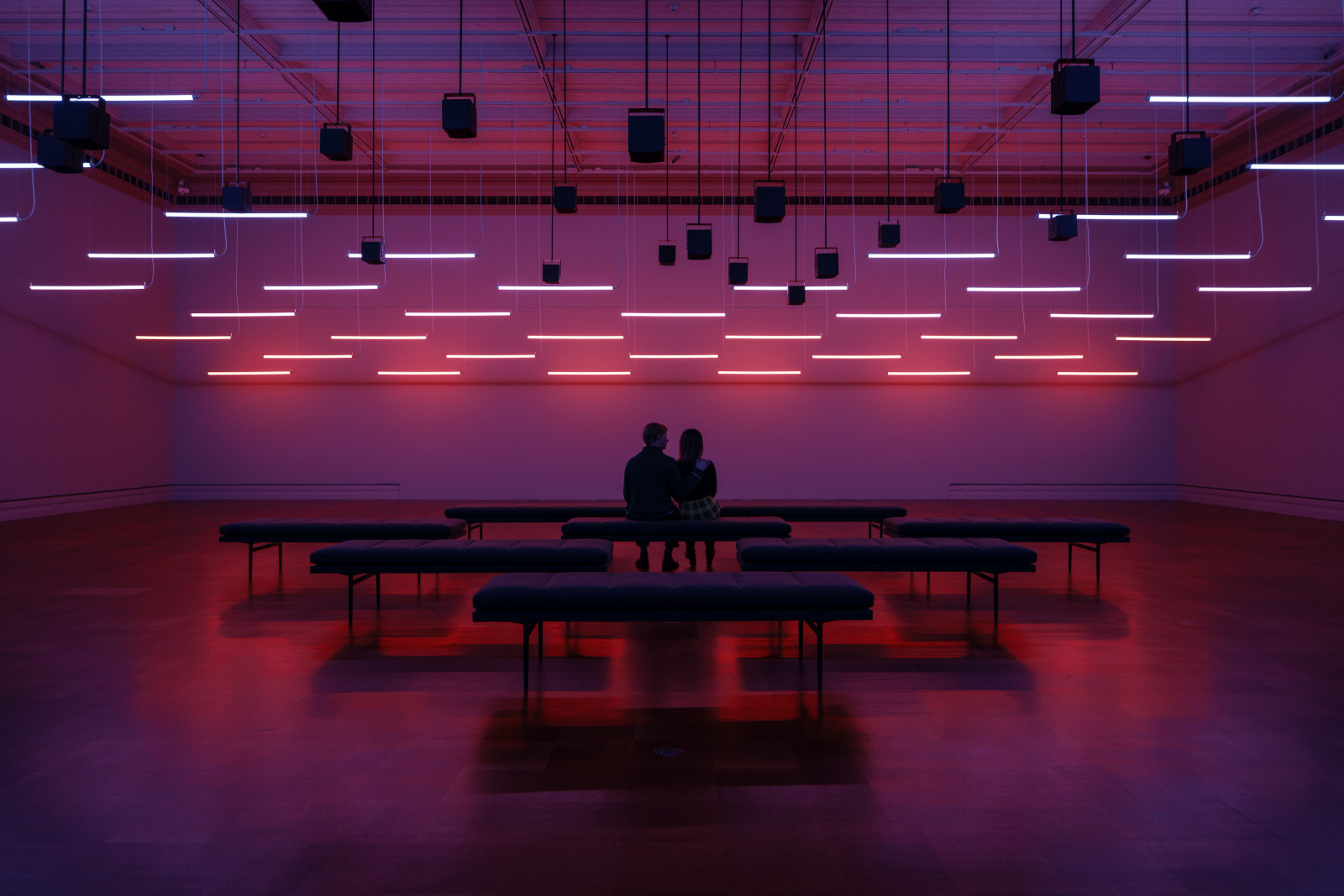Unguent Bottle (Alabastron) with Festoon Pattern
Unguent Bottle (Alabastron) with Festoon Pattern
Place of OriginMesopotamia or Eastern Mediterranean
DateLate 8th or 7th century BCE
DimensionsH: 3 3/8 in. (8.6 cm); Diam: 1 1/8 in. (2.9 cm)
MediumCore-formed; applied, partly marvered threads.
ClassificationGlass
Credit LinePurchased with funds from the Libbey Endowment, Gift of Edward Drummond Libbey
Object number
1961.39
Not on View
DescriptionThis small alabastron has a blue ground, probably decorated with opaque white and possibly yellow threads. It features a short, uneven, asymmetrical outsplayed rim and an uneven cylindrical neck that tapers upward, joining the rounded shoulder at an obtuse angle. The cylindrical body slightly tapers upward and ends in a convex bottom. The decorative partly marvered threads, likely white and/or yellow, were applied starting at the shoulder and wound spirally, first in a single horizontal line, then tooled into a shallow, close-set festoon pattern extending down to the basal angle. The body exhibits closely spaced vertical depressions due to the tooling process. Condition: Complete, except for small chips on the rim and body. Surface displays iridescence and pitting. Cream-colored weathering obscures the original colors, except in tiny areas.
Label TextThis small glass bottle (ht. 8.6 cm) belongs to a family of ovoid bottles with rounded bases, a type found at sites such as Kiš and Ur. Like the examples from those cities, it has an elongated body and narrow neck, with threads of glass applied in contrasting colors and combed into a festoon pattern. Traces of its original dark blue base color remain beneath the beige corrosion.
The parallels with vessels from graves at Kiš and Ur help to place this bottle in the late 8th to 7th century BCE, when core-formed glassmaking flourished in Mesopotamia. These bottles likely held oils or perfumes and echo the forms of stone alabastra and metal containers of the period, showing how glassmakers adapted prestigious shapes from other luxury crafts. Together, they reveal a shared artistic vocabulary across Mesopotamia and the wider Near Eastern world.
Published ReferencesThe Toledo Museum of Art, Art in Glass: A Guide to the Glass Collections, Toledo, Ohio, 1969, p. 15, ill.Grose, David F., "Ancient Glass," TMA Museum News 20, no. 3, 1978, p. 72, fig. 5.
Grose, David F., Early Ancient Glass: Core-formed, Rod-Formed, and Cast Vessels and Objects from the Late Bronze Age to the Early Roman Empire, 1600 B.c. to A.d. 50, New York, Hudson Hills Press in association with the Toledo Museum of Art, 1989, Cat. No. 28, p. 85, repr. (col.) p. 69.
Schmidt, Katharina. Glass and Glass Production in the Near East during the Iron Age: Evidence from Objects, Texts and Chemical Analysis. Oxford: Archaeopress, 2019, pp.86-87, 225-226, no. AM46, pl. 55.
3rd through 2nd century BCE
18th Dynasty (1550-1292 BCE), about 1400-1350 BCE
3rd century BCE
Probably 6th Century BCE
2nd through mid-1st century BCE
2nd through mid-1st century BCE
Mid-4th through early 3rd century BCE
Mid-4th through early 3rd century BCE
4th-3rd century BCE
5th century BCE
Late 6th through 5th century BCE
Mid-4th through early 3rd century BCE

Membership
Become a TMA member today
Support TMA
Help support the TMA mission











